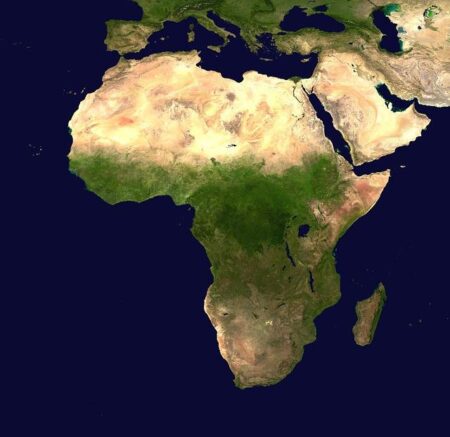Title: Meeting Critical Needs: Catholic Relief Services’ Vital Humanitarian Work in Niger
In the heart of West Africa, Niger faces a complex web of challenges that threaten the well-being of millions. Amid escalating food shortages, economic hardships, and worsening health emergencies, Catholic Relief Services (CRS) has emerged as a key humanitarian actor dedicated to supporting the country’s most vulnerable populations. By delivering essential aid ranging from nutrition support to educational programs, CRS is actively working to strengthen community resilience and promote sustainable recovery. This article delves into CRS’s impactful initiatives in Niger and underscores the urgent necessity for continued humanitarian engagement in one of Africa’s poorest nations.
Niger’s Humanitarian Landscape: Challenges and CRS’s Strategic Response
Niger is currently enduring one of West Africa’s most severe humanitarian emergencies. The convergence of political unrest, climate-induced disasters such as recurrent droughts and floods, alongside chronic food insecurity has created an environment where millions struggle daily for survival. Agriculture-dependent families are particularly hard-hit by these environmental shocks.
Displacement, widespread malnutrition, and limited access to fundamental services continue to imperil especially women and children across the country. Recent data paints a stark picture:
| Indicator | Current Figure (2024) |
|---|---|
| Total Population Requiring Assistance | 4.7 million |
| Children Suffering from Acute Malnutrition | 2 million+ |
| IDPs (Internally Displaced Persons) | 3.8 million |
Catholic Relief Services plays an indispensable role amid this crisis by delivering immediate relief while fostering long-term community empowerment. Their holistic approach encompasses food aid distribution, healthcare provision, water sanitation projects, and education programs tailored to local contexts.
A cornerstone of CRS’s methodology is its partnership with local organizations and active involvement with affected communities-ensuring that interventions are culturally sensitive and sustainable over time. This collaborative model not only addresses urgent needs but also builds capacity within communities for future self-reliance.
CRS’s Multifaceted Approach: Strengthening Communities Through Targeted Programs
Catholic Relief Services employs a comprehensive strategy designed to tackle Niger’s intertwined crises effectively by leveraging local expertise alongside international resources.
- Crisis Response Operations: Rapid deployment during emergencies such as floods or disease outbreaks ensures timely assistance reaches those most affected.
- Sustainable Food Security Projects: Promoting climate-resilient farming techniques like agroforestry and introducing drought-tolerant crop varieties help farmers adapt amid changing weather patterns.
- Water Access & Hygiene Initiatives: Installation of boreholes combined with hygiene education campaigns reduces incidences of waterborne illnesses-a critical concern given Niger’s vulnerability to cholera outbreaks.
- Mothers & Children Health Programs:: Providing maternal care services along with nutritional supplements combats high rates of child malnutrition prevalent across rural areas.
The effectiveness of these efforts is continuously monitored through rigorous evaluation frameworks measuring both reach and impact on beneficiary well-being:
| Program Name | Number Served (2023-24) | Impact Rating (Scale 1-10) |
|---|---|---|
| Sustainable Agriculture Initiative
(e.g., introduction of millet varieties resistant to drought) 5,500 farmers 9 | ||
| Mothers & Child Nutrition Program
(Community-based therapeutic feeding centers) 3,800 children & mothers 8 | ||
| Borehole Water Supply Project
(Installation + hygiene training) 4,200 households 9 | ||
| Epidemic Emergency Response
(Flood relief + cholera outbreak management) 3,000 individuals 10 |
| Main Strategy | Aimed Outcome | |
|---|---|---|
| Community-Led Development Initiatives | Greater ownership leading to sustained project success within villages. | |
| Renewable Energy Solutions | Improved access reducing reliance on costly fossil fuels while promoting environmental sustainability. | |
| Disaster Risk Reduction Education | Communities better prepared through awareness campaigns minimizing disaster-related losses. | |







